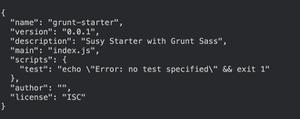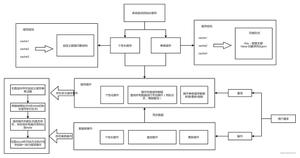springboot之@ConfigurationProperties的使用

上面就是官方文档的解释,如果你想使用多个属性或者你的数据是由层次结构的,那么就可以使用@ConfigurationProperties来处理
那么什么是层次的结构呢,实际上就是我们开发过程中说的属性的嵌套,例如一个Person 类中有一个引用类型是Address 那么这种就是有层次结构的
那么怎么使用呢
Spring Boot provides infrastructure to bind @ConfigurationProperties types and register them as beans. You can either enable configuration properties on a class-by-class basis or enable configuration property scanning that works in a similar manner to component scanning.
大概意思是说spring-boot对绑定@ConfigurationProperties 提供了一个基础的功能,你可以通过扫描组件或者通过创建类的方式进行,那么常用的大概有这几种
1.@EnableConfigurationProperties 和ConfigurationProperties 配合使用
@ConfigurationProperties(prefix = "acme")@Data
public class AcmeProperties {
private boolean enabled;
private InetAddress remoteAddress;
private final Security security = new Security();
@Data
public static class Security {
private String username;
private String password;
private List<String> roles = new ArrayList<>(Collections.singleton("USER"));
}
}
@Configuration
@EnableConfigurationProperties({AcmeProperties.class})
public class AcmeConfigTest {
}
@RestController
@RequestMapping("/properties-get")
public class PropertiesTestController {
//此处注入
@Autowired
private AcmeProperties acmeProperties;
@GetMapping("/address")
public String getRemoteAddress(){
return JSON.toJSONString(acmeProperties.getRemoteAddress());
}
@GetMapping("/enable")
public String getEnabled(){
return JSON.toJSONString(acmeProperties.isEnabled());
}
@GetMapping("/security")
public String getPropertyValue(){
return JSON.toJSONString(acmeProperties.getSecurity());
}
}
这种在写你自己的自动配置时经常用到,可以参考spring-boot 有关的自动配置大部分都是这么干的
2.@Component和@ConfigurationProperties配合
@ConfigurationProperties(prefix = "acme")@Data
@Component
public class AcmeProperties {
private boolean enabled;
private InetAddress remoteAddress;
private final Security security = new Security();
@Data
public static class Security {
private String username;
private String password;
private List<String> roles = new ArrayList<>(Collections.singleton("USER"));
}
}
@RestController
@RequestMapping("/properties-get")
public class PropertiesTestController {
@Autowired
private AcmeProperties acmeProperties;
@GetMapping("/address")
public String getRemoteAddress(){
return JSON.toJSONString(acmeProperties.getRemoteAddress());
}
@GetMapping("/enable")
public String getEnabled(){
return JSON.toJSONString(acmeProperties.isEnabled());
}
@GetMapping("/security")
public String getPropertyValue(){
return JSON.toJSONString(acmeProperties.getSecurity());
}
}
3.使用在方法上和@Bean一起
@Datapublic class AcmeProperties {
private boolean enabled;
private InetAddress remoteAddress;
private final Security security = new Security();
@Data
public static class Security {
private String username;
private String password;
private List<String> roles = new ArrayList<>(Collections.singleton("USER"));
}
}
@Configuration
public class AcmeConfigTest {
@ConfigurationProperties(prefix = "acme")
@Bean
public AcmeProperties acmeProperties(){
return new AcmeProperties();
}
}
这种方式,在绑定第三方配置特别有用
有关配置文件
acme.enabled = trueacme.remote-address=127.0.0.1
acme.security.username = "wei"
acme.security.roles = {"role1","role2"}
以上是 springboot之@ConfigurationProperties的使用 的全部内容, 来源链接: utcz.com/z/515112.html









